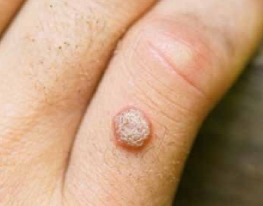About Us

Warts
Warts are common skin growths caused by the Human Papilloma Virus (HPV). There are more than 70 types of HPV. Several common skin growths like skin tags and horns are erroneously referred to as warts by the untrained. Your dermatologist is best trained to correctly identify a wart.
Warts are seen as dry, rough, firm, raised or flat growths which are 0.5-2.5 cm in size. They can occur anywhere in the body, including the throat and under the nail plate. But the most common locations are the head/neck (acquired during shaving or close trimming), palms and soles (acquired from wet and damp surfaces). They are painless and do not itch. Warts are painful only when they occur on the soles and under the nail.
The HPV virus invades the upper layers of the skin. It then takes over the cell DNA, and directs it to divide at an escalated rate. This creates the heap of tissue, which we identify as the wart.
In most cases, warts are self-limiting. They can disappear spontaneously in a few months or years. But occasionally they tend to persist. This is because our immune system fails to identify the virus as they are deeply embedded in the thick mass of tissue.
Some warts are so thick that they appear like miniature fur-trees. Also, an untreated wart can be contagious to yourself (you may develop new warts elsewhere) and others.
It is a source of cosmetic embarrassment as well. Genital warts are sexually transmitted, and if acquired during pregnancy, can rapidly enlarge. It can also lead to laryngeal (voice box) warts in the newborn.
Hence any treatment modality will aim at chemically or physically cauterizing the wart. The idea is to remove the thick heap of tissues, thus exposing the virus in the skin. From there on, our innate immunity takes over and eliminates the wart. The treatment may be chemical cautery, freezing with liquid nitrogen, electrocautery or one of the many lasers.
Your dermatologist will help you choose the correct treatment modality, based on the location and number of warts, and your own convenience. Pregnant women MUST NOT apply any local remedies without consulting their dermatologist first.
Given the above mentioned facts, you can now see why warts tend to recur, even after treatment. Bear this in mind. If no new warts are detected for three consecutive months, it constitutes reasonable (though not certain) proof of cure.
Although warts are contagious, they do not reflect your personal hygiene. Warts can be frustrating but do not despair. You are not alone. 1 in 20 people will get a wart sometime in their life.

